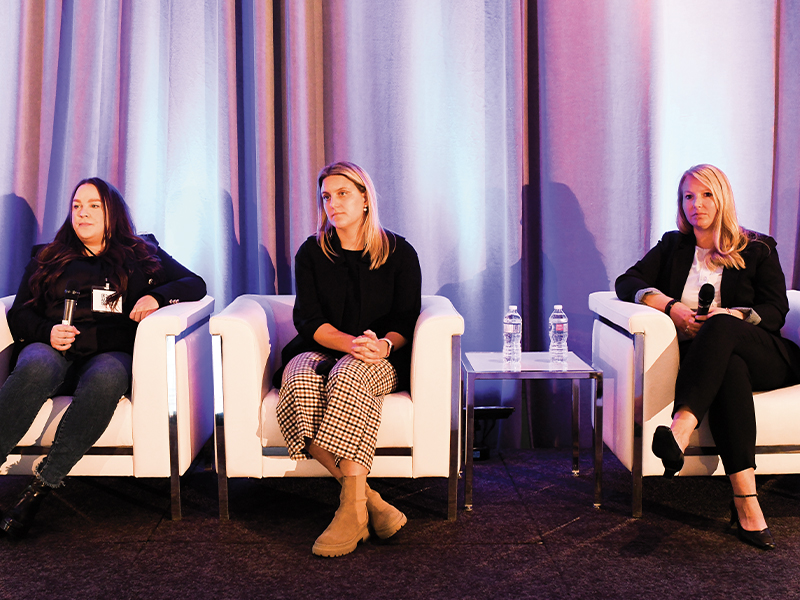

For too long, disability programs have been reactive rather than proactive, but connecting disability management to overall employee well-being strategies can help reduce disability trends and help employees on leave successfully return to work.
“Where we’re seeing our [plan sponsor] clients have success is acknowledging the problem starts way sooner than [the point when] someone is actually going off work,” said Taryn Huyer (centre), vice-president of transformation at CBI Health, during a panel session at Benefits Canada‘s 2022 Healthy Outcomes Conference. “It’s surrounding folks when they’re at work with the right resources.”
Taking a proactive approach to disability management and rehabilitation is crucial, she said, but too often it isn’t done. On average, people arrive at CBI’s door 14 months after their date of disability. “At that time, only 15 per cent of people opt to go back to work. And in Canada right now, less than one per cent of people are hired with disabilities. This is a very systemic issue that we’re quite attuned to because we deal with it every day.”
Read: Role of data integration in disability management post-pandemic
Brooke Schwarz (right), manager of national total rewards at BDO Canada LLP, said the company sees disability management as one piece of the employee well-being puzzle. “We take a look at our paramedical usage, our drug spend, our [employee assistance plan] usage and trends and we really try to look at those emerging themes and the trends that come in to help support our employees during that time.”
Mental health has always been among the top drivers of disability and EAP usage at BDO, said Schwarz. Pre-pandemic, it increased its allowance for spending on mental-health paramedical practitioners and introduced a mental health in the workplace program.
In addition, BDO is expecting to see an eight per cent increase in disability leaves in 2022, largely due to surgeries postponed by the pandemic. “A lot of those things are really out of our control,” she said, but added the company has tried to help employees by adding a virtual health-care option.
Kelly Dawson (left), global lead of wellness and leaves at Shopify Inc., pointed out employees going on leave tend to be a small percentage of the population, meaning employers have “much more opportunity to touch them before they get to that red zone” through an overall employee wellness strategy. In particular, the company has worked to simplify employees’ pathway to accessing mental-health supports. “You don’t want folks having to dig through internal web pages or asking a leader who doesn’t know what resources you have.”
Read: Shopify wins award for ‘digital by design’ employee health, wellness strategy
Over the past few years, Dawson’s biggest focus has been updating accommodation and return-to-work support. Two years ago, Shopify told all managers to approve leaves of four weeks or less rather than referring it first to the wellness team. “Ideally, that gives the employee time to see their doctor, to focus on their recovery and not just proving to us that they need an accommodation.”
Huyer said employers that have successfully helped employees return to work are those that have introduced individualized strategies for employees, include things like remaining in contact with their managers and their human resources department while they’re off work and helping them navigate their benefits program to find the supports they need.
These strategies allow employees to feel empowered and take an active approach to their own journey. “When you’re engaged and empowered you have a much better chance of returning . . . back to your full purpose.”
Read more coverage of the 2022 Healthy Outcomes Conference.
